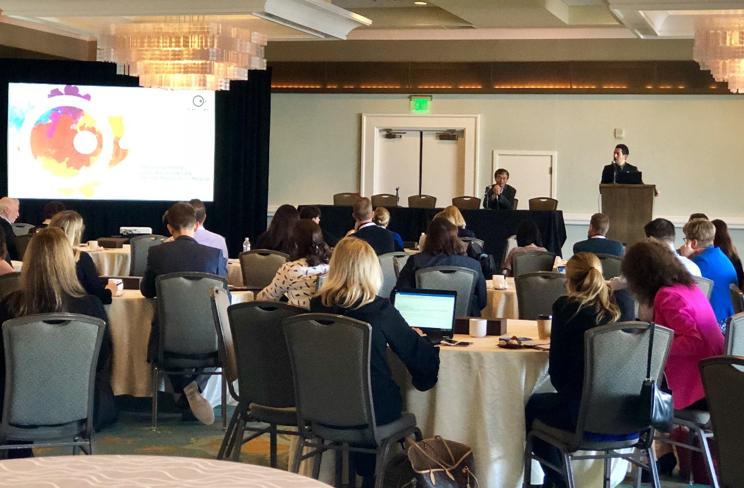HIV stands for human immunodeficiency virus. It can spread through certain bodily fluids (blood, semen, pre-seminal fluid, rectal fluids, vaginal fluids and breast milk). HIV attacks the immune system, especially T cells (CD4 cells), which help fight off infections.
Once in the body, HIV is a master of disguise. It uses a shield of glycoproteins to hide from the body’s immune system and enter immune cells without any detection. HIV inserts its genetic information into the DNA of immune cells, which is saved as ribonucleic acid (RNA) in the virus. With its enzymes and help from the infected immune cell, the virus produces HIV proteins, which are building blocks for a new HIV.

There are three stages of HIV disease:
- Acute HIV infection: During the first 2–4 weeks after HIV infection, people may develop flu-like symptoms. This is a typical response of the body to an infection. The HIV levels in the blood are high and there is a high risk of transmitting the virus to someone else.
- Clinical latency: The HIV reproduces at low levels. Patients may not experience any symptoms, but can still transmit HIV to someone else.
- Acquired immunodeficiency syndrome (AIDS): Patients with AIDS have a poor immune system (CD4 cell number in blood is less than 200 cells/mm3). They get an increased number of “opportunistic” illnesses because their immune system is unable to fight off any infections and diseases. The HIV levels are very high and patients can be very infectious.
HIV and Youth – What’s the Big Deal?
According to the World Health Organization, at least 30% of all new HIV infections are estimated to happen among youths 15–25 years of age. In addition, infants who were infected with HIV at birth by their mothers are part of the current young generation. Combining both groups, there are 5 million youths living with HIV.

Does the HIV problem apply to modern societies, such as Europe and the USA? According to the US Centers for Disease and Control Prevention, one in five HIV diagnoses occurred in youths 13–24 years of age in 2014. Among youths, 60,900 lived with an HIV infection at the end of 2013, of whom 31,300 (51%) lived with undiagnosed HIV. This is the highest rate of undiagnosed HIV among all age groups in the USA.

The reasons for these high HIV rates among youths are diverse:
- Inadequate sex education at home and school can lead to low rates of HIV testing and condom use. Alcohol and drug abuse often result in unprotected sexual intercourse.
- There seems to be a stigma around HIV. In particular, at the beginning of exploring their sexuality, young people are shy about discussing HIV with others and do not feel comfortable asking their partners for protection during sex.
- Gay and bi-sexual youths particularly can experience bullying at school. This feeling of loneliness might lead to risky sexual behaviour.
HIV Treatment – Current and Future Options
Unfortunately, there is no cure for HIV. However, treatment helps to slow or prevent the progression of HIV, and the chance of transmitting HIV to someone else can be reduced.

Anti-Retroviral Therapy – Standard Therapy for HIV Treatment and HIV Prevention
Current HIV treatment is called anti-retroviral therapy (ART). ART reduces the rate at which HIV makes copies of itself (replication). For people who are at very high risk for HIV, this therapy type is also used as pre-exposure prophylaxis (also called PrEP) to lower their chances of getting infected.
This type of treatment can dramatically prolong the lives of patients with HIV. This treatment is often individualised, as it depends on different factors such as HIV type, potential for treatment adverse events, pill burden, drug-drug interaction, social status and costs.
Why do we need additional therapies?
- Patients with HIV require daily, lifelong ART therapy without treatment interruption. This extensive treatment regimen can lead to toxicity problems and make patients sick.
- ART keeps HIV itself at bay and does not help the immune system to deal with the virus on its own.
- It can supress HIV to undetectable levels, but the virus is not really gone. HIV can hide for many years by infecting immune cells without actively producing new HIV. These infected cells are in a latent (sleeping) state. Scientists often refer to them as “latent HIV reservoir”. ART has no effect on sleeping HIV as it does not produce new HIV.
Future Therapy – Kick and Kill Strategy
The latent HIV reservoir poses a high risk for patients as sleeping HIV can become active again at any time and start making new HIV (also called “viral rebound”). Scientists are trying to find a “functional cure” of HIV, which is not a cure per se, but would allow patients to live without ART for years. One strategy to achieve functional cure is “kick and kill” (also called: “shock and kill”). It is a two-step therapy approach:
- A drug wakes up sleeping HIV (immune stimulant).
- A therapeutic vaccine teaches the immune system how to detect and attack the virus. A therapeutic vaccine is designed to treat an existing disease. In contrast, most other vaccines are designed to prevent
Scientists are trying to develop therapeutic HIV vaccines that allow the immune system to detect highly “preserved” internal structures and enzymes of HIV that cannot change without harming the virus. This step is very tricky but extremely important because HIV can rapidly change its genetic blueprint by mutations and thereby avoid attacks from the immune system.
Future Therapy – Gene/Cell Therapy
Gene therapy is still at a very early stage. Scientists are trying to genetically modify immune cells to create HIV-resistant T cells in patients with HIV. Similar to the kick and kill strategy, the main challenge is to overcome rapidly occurring HIV mutations. However, it has the advantage of providing individualised therapy without any risks associated with re-activating the HIV virus.
Future Therapy – Preventive Vaccines
Scientists are trying to develop preventive HIV vaccines, which could be given to people who are not infected with HIV. These vaccines could prevent HIV infection by teaching the immune system how to recognize and effectively fight HIV. The development of preventive vaccines is at an early stage.
Insights into Scientists’ Recent Ideas
HIV’s Undercover Secret – Glycans
HIV glycoproteins are covered in glycans, which are sugar molecules synthesised by the HIV-infected immune cell. The glycan shield allows the HIV virus to be largely undetected by blocking immune cells from seeing the virus.
Scientists have developed a method to analyse the glycan shield for potential vulnerable holes. This method might allow scientists to present HIV-like glycoproteins to the immune system and thereby teach it to fight HIV.
Potential Therapeutic/Preventive HIV Vaccines
- A current HIV vaccine study investigates whether the HVTN702 vaccine prevents HIV infections among adults in South Africa. The vaccine is based on one investigated in the RV144 study, which could prevent 31% of HIV infection over a follow-up of 3.5 years after vaccination. Results of this study are expected in 2020.
- In patients with HIV, the vaccine SAV001 was well-tolerated and triggered an anti-HIV immune response. The next step would be to see whether this vaccine can prevent HIV.
What Can Adults do During the National Youth HIV + AIDS Awareness Day?
We can raise awareness by joining the conversation and by sharing information about HIV/AIDS in youth. You never know what impact you have on other people. A lonely teenager might stumble across your tweet by accident and read more about this topic. Parents might feel encouraged to start a conversation with their children. We could try to make the world a better place, one person at a time…
Susanne Ulm is a Medical Writer part of our Prime team at Prime Global and has been with the company since November 2014. Susanne has broad experience in different therapeutic areas, and has a passion for communicating science to different types of audiences.




